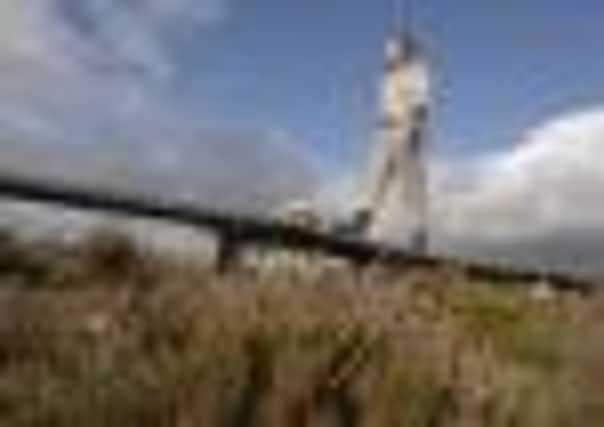Warning of threat to wildlife as Lothian’s peat bogs dry up


The nation’s crop of wild cranberries, as well as native populations of dragonfly, adder and lizard, are among the species under threat because lowland peat bogs in Mid and West Lothian are rapidly drying out. The warning comes after a landmark survey was carried out by the Scottish Wildlife Trust (SWT), which found all of the Lothians-based bogs examined had been damaged by human development and were degrading.
SWT director of conservation Jonny Hughes said: “The bogs are in a very bad way and in dire need of restoration.”
Advertisement
Hide AdAdvertisement
Hide AdMr Hughes said the bogs – located at sites across Mid and West Lothian – provide a natural habitat that is among the rarest and most threatened in Europe.
He added that if efforts were not made to restore water lost through man-made drains, the bogs – made of Sphagnum or peat moss – would quickly become arid scrubland, unable to support the plants and animals which depend on them.
“The loss to these sites happens incrementally – every 12 months that pass without efforts to stop the water loss means you have a loss of species,” he said.
“The bogs are restorable but many of them have lost a lot of their interest in terms of biodiversity. The damage as a result of human development has been happening over a period of decades, if not centuries.
“Rare plant species such as wild cranberry, which grows almost exclusively in lowland bogs, and rosemary have already disappeared from some of the sites we looked at.”
He urged government bodies to pump in new investment of £1300 per hectare to “dam up” man-made drains and remove existing scrub.
“Once the bogs dry out completely it is very difficult to restore them and the plants and animals that live on them disappear – we need to act now,” he said.
Nationally, of the 58 sites surveyed by SWT, nearly half were found to have deteriorated in the past 15 years.
Advertisement
Hide AdAdvertisement
Hide AdTwo of the Lothians-based bogs – Tailend and Side Moss – have been designated as sites of special scientific interest (SSSI).
The situation in the Lothians, which has 19 raised peat bogs, compares badly to Edinburgh, where the Red Moss of Balerno has already been designated as a nature reserve by SWT.
Bosses at government body Scottish Natural Heritage said they were aware of SWT’s warning and insisted they were injecting new funds for peat bog protection.
Andrew McBride, SNH wetland ecologist, said: “The SWT report highlights the work that needs to be done to restore raised bogs in Scotland.
“This autumn, the Scottish Government recognised the importance of peatlands by committing £1.7m to peatland restoration.
“SNH, with other interested parties, are already working on a Peatland Plan for Scotland to support peatland restoration and help keep existing peatlands in good condition.”
But Mr Hughes called the money “a drop in the ocean”.
“It’s a good start but more will be needed in the longer term,” he said.
Adder habitats
ADDERS occupy a variety of habitats, including open woodland, hedgerows, moorland, riverbanks and bogs. The adder is the country’s only poisonous snake but is safe if not aggravated. They hunt lizards and small mammals, as well as ground-nesting birds. Adders hibernate from October to March, which is the easiest time of year to find them basking on a log or under a warm rock.